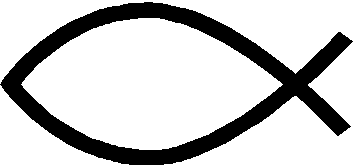
Ichthus
ichthus, which can also be spelled ichthys, is the Greek word for fish, and was a symbol used by early Christians to identify one another.
Ichthus and the early Christians

It was a symbol of the early Christians to identify each other. During the times of persecution of Christianity, a Christian traced one of the arches of the ichthus in the sand; if someone else drew the other arc, then they knew they were both Christians.
This precaution was necessary because until the Edict of Milan in AD 313, Christians could not openly reveal their faith as they risked arrest and execution.
It must be taken into account that in the early days of Christianity, the cross was not yet the symbol of Christianity.
Ichthus as acrostic
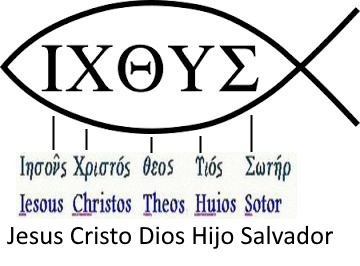
This word defines the acrostic IXИYY (with the N inverted) which translates as:
I – Iota or Iesous (meaning Jesus)
X – Chi or Christos (meaning Christ)
И – Theta or Theou (meaning God)
Y – Upsilon or Yidos/Huios (meaning Son)
Y – Sigma or Soter (meaning Savior).
The acrostic became popular in the 2nd century AD. as a symbol among Christians. The fish was a symbol of fertility among the pagan Romans, so it went unnoticed when used by the early Christians.
The fish as a Christian symbol
The image of the fish (and the fisherman) as a symbolic image appears several times in the Bible.
Mark 1:17: “And Jesus said to them, Follow me, and I will make you fishermen.
of men.”
· Matthew 4, 18-19: “And Jesus walking by the Sea of Galilee, he saw two brothers,
Simon, who is called Peter, and Andrew his brother, who were casting the net into the
sea; because they were fishermen. And he said to them: Come after me, and I will make you
fishers of men.”
Matthew 14, 17: “And they said, We have here but five loaves and two fish.”
John 6,9: “A boy is here who has five barley loaves and two
minnows; but what is this among so many?
Luke 5, 5-6: “And Simon answering, he said to him: Master, having worked all
the night, we have taken nothing; but at your word I will cast the net. and having
done, they enclosed a great multitude of fish, that their net was torn.”
John 21, 6: “And he said to them: Cast the net to the right hand of the boat, and you will find.
Then they threw her out, and they could not get her out in any way, because of the crowd
of the fish.”
In this sense, the Christians would be the fish, as indicated by a passage by Tertullian (born in the year 160), according to which “We little fish, following the image of our ‘ichtys’, Jesus Christ, are born in the water”. According to commentators, the water he refers to is the baptismal water.
This association between the Christian and the fish can also be seen in various images from the early days of Christianity, such as the following reproduction of an oil lamp:

In relation to this last image, it should be noted that some authors point out that the figure that comes out of the fish’s mouth is not a Christian but Christ himself who, like Jonah, comes out of the belly of a fish.
It is also possible to find the fish as a Christian symbol in the Catacombs of Rome. It is normally found next to the loaves, recalling the Eucharistic celebration, or to the anchor.
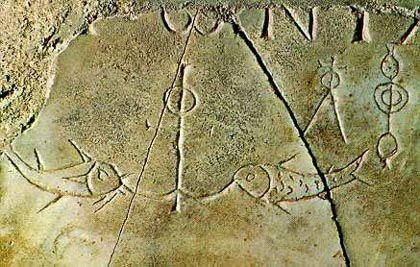
Ichthus as mandorla
Some authors have pointed out the similarity between the ichthus and the mandorla, an almond-shaped frame where sacred characters are represented.
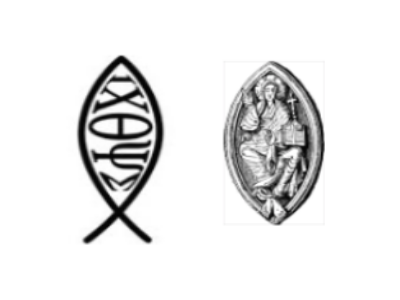
This association would lead her to associate the ichthus with the symbol called Vesica Piscis, which consists of two intersecting circles of equal diameter:

Fuentes Relacionadas con los símbolos en general
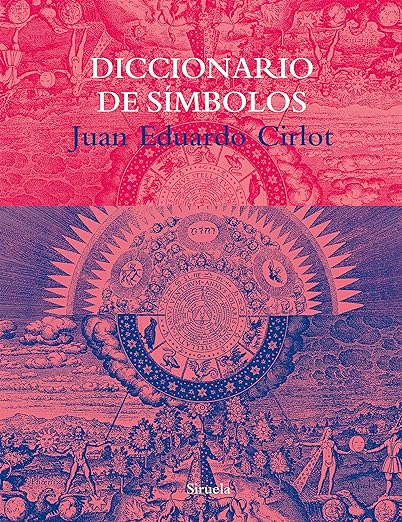
Inspirado libro del poeta Juan Eduardo Cirlot sobre los símbolos
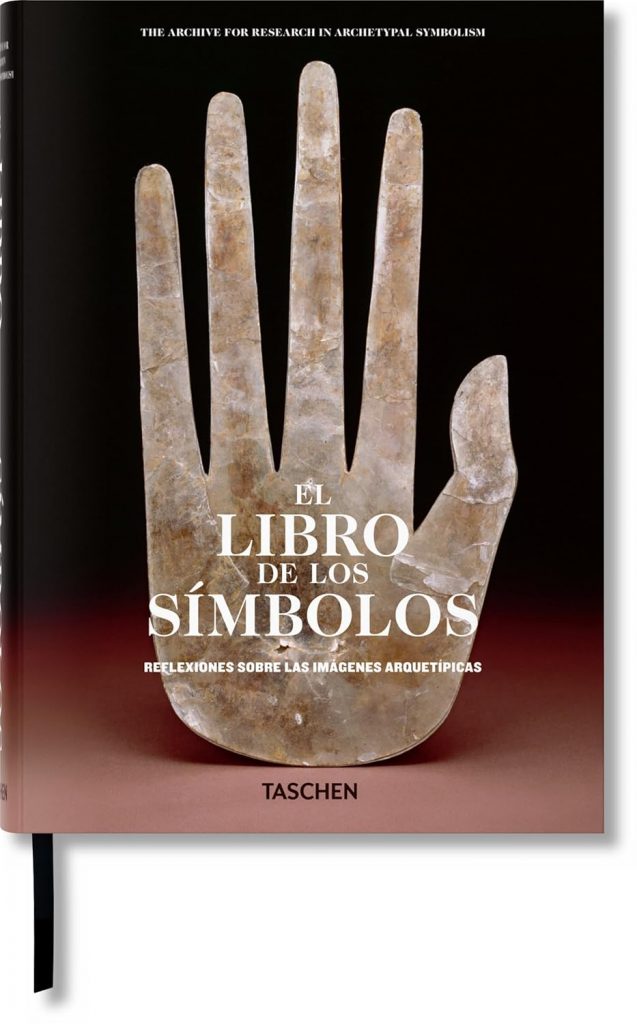
Ensayos acompañados de unas 800 imágenes de diversos símbolos. La editorial Taschen es siempre garantía calidad de edición.
